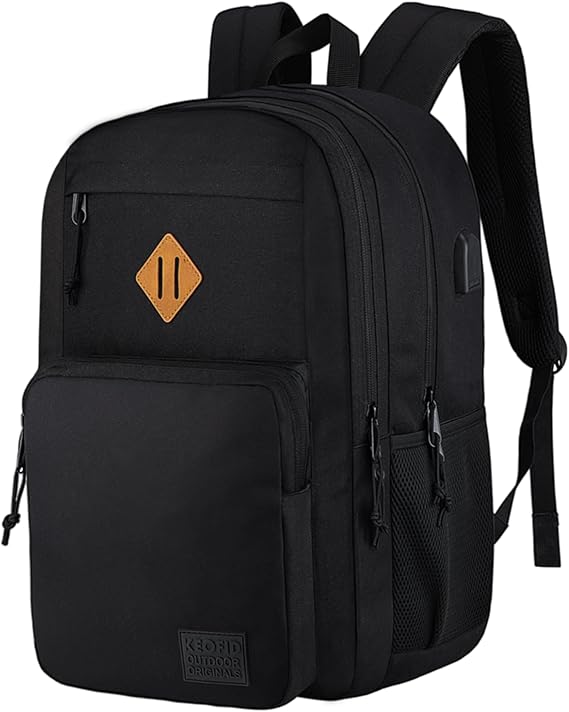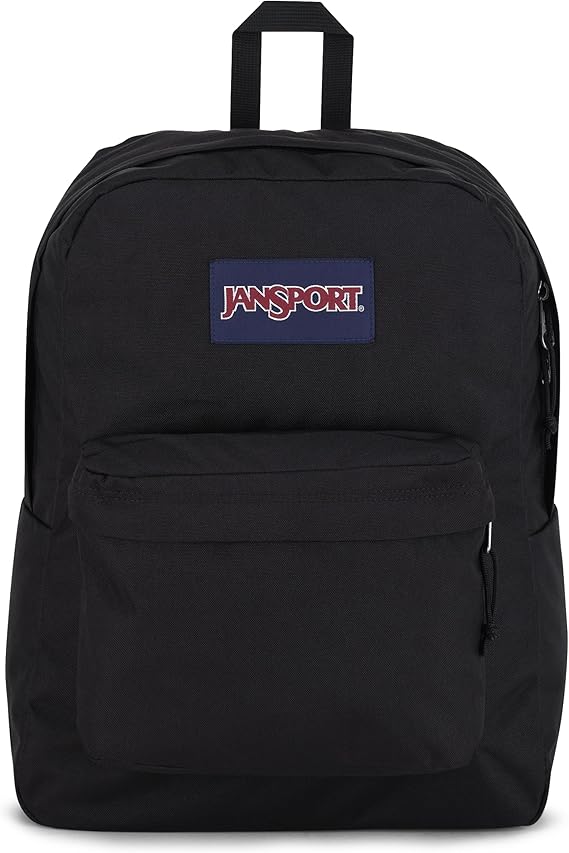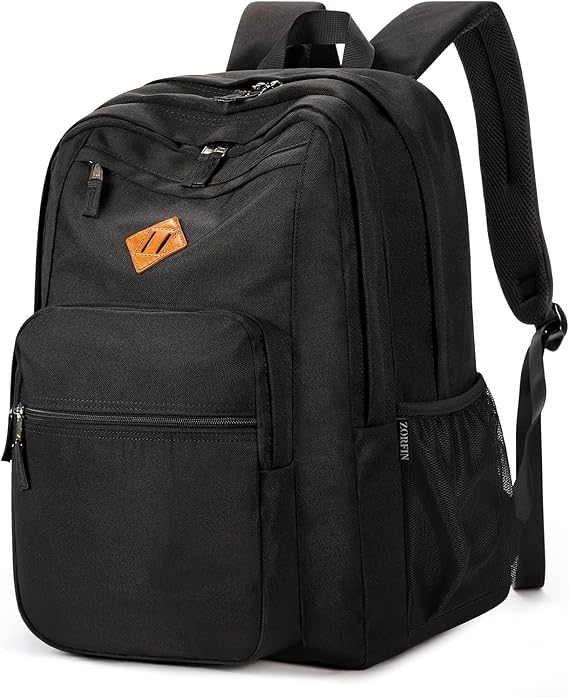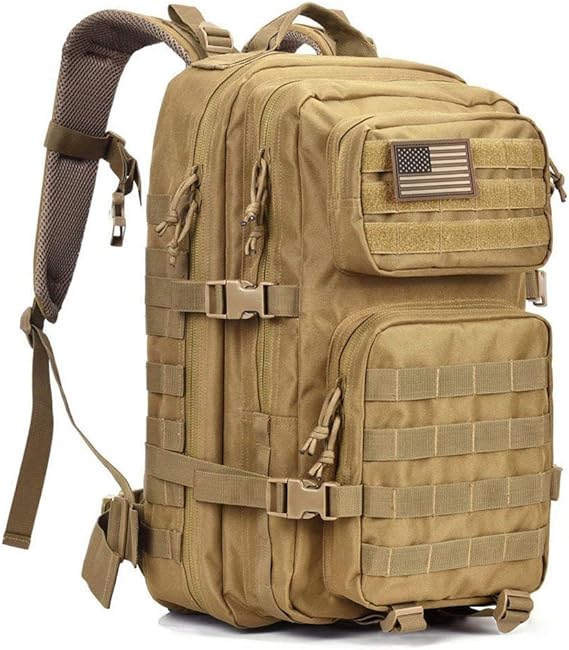Backpack Capacity Size Chart
Select your backpack size to find out what fits:
Looking for the perfect fit? Check out these Best-Selling Backpack.






Backpack Capacity Size Chart – Finding the Perfect Backpack for Your Needs
When it comes to outdoor adventures, travel, or even daily commutes, selecting the right backpack can make a huge difference. One of the most important factors in choosing a backpack is its capacity. Understanding the various backpack capacities available, and how they relate to your specific needs, will help you make an informed decision when selecting the ideal pack for your journey.
We’ll explore everything you need to know about backpack capacity, including the different sizes and what types of gear and activities each size is best suited for. We’ll also dive into the backpack capacity size chart, discuss how to measure capacity, and provide tips on how to properly pack your backpack for maximum comfort and efficiency.
What Is Backpack Capacity?
Backpack capacity refers to the volume of space available inside the backpack, typically measured in liters (L). It indicates how much gear the backpack can hold, whether it’s for a quick day trip or an extended hiking adventure. Understanding backpack capacity is key to making sure you choose the right size for your intended activity.
A common misconception is that a larger backpack is always better. However, the right capacity depends on the length and nature of your activity, the weight you’re willing to carry, and how efficiently you pack your gear.
Backpack Capacity Size Chart
The best way to break down backpack capacity is by considering the size of the bag in liters, which will determine what type of trips it’s suitable for. Below is a general backpack capacity size chart, which categorizes backpacks based on their volume and common uses:
| Backpack Capacity | Volume (Liters) | Recommended Use | Typical Backpack Type |
|---|---|---|---|
| Daypacks | 10-20L | Short day trips, commutes, or light activities | Hiking backpacks, school backpacks |
| Small/Medium Backpacks | 20-40L | Weekend trips, light hiking, or travel where you need extra space for essentials but not overnight gear | Travel backpacks, overnight bags |
| Medium-Large Backpacks | 40-60L | Extended hiking, weekend camping, or long weekends where you need a few extra layers and food | Hiking backpacks, trekking packs |
| Large Backpacks | 60-80L | Multi-day trips, backpacking, long camping trips, or when you need to carry a tent and other large gear | Hiking backpacks, expedition backpacks |
| Extra-Large Backpacks | 80-100L | Extreme expeditions, mountaineering, or carrying large amounts of gear for long, intensive adventures | Expedition packs, mountaineering packs |
| Specialized Packs | 10-100L | Specific for activities such as climbing, ski touring, or mountaineering where gear requirements vary | Climbing, skiing, or mountaineering packs |
1. Small Daypacks (10-20 Liters)
Backpack Capacity: 10-20L
Best For: Short day trips, daily commuting, urban travel, or light outdoor activities like short hikes or bike rides.
Small backpacks typically have a capacity of 10 to 20 liters, and they are designed to carry only the essentials. These packs are ideal for day hikes, commuting to work or school, and traveling light. If you’re heading out for a short trip and only need to bring a water bottle, snacks, a jacket, and maybe a small camera or personal items, a daypack is your go-to option.
What Fits?
- Water bottles
- Snacks
- Light jacket or sweater
- Small camera
- Electronics (phone, tablet, or laptop)
Examples:
- Hiking Daypack: A 15L backpack is great for a short day hike, where you’ll need to carry just the basics.
- Commuter Backpack: A 20L backpack can comfortably carry your laptop, charger, notebook, and daily essentials.
2. Small/Medium Backpacks (20-40 Liters)
Backpack Capacity: 20-40L
Best For: Weekend trips, light camping, or situations where you need to carry extra clothing, food, and personal items but don’t plan to sleep outdoors.
If you’re planning a weekend getaway or a short camping trip where you won’t need a lot of heavy gear, a 20 to 40-liter backpack is ideal. This size provides just enough space for an extra layer of clothing, a small sleeping bag, a tent, and other camping essentials. It also works great for travel backpacks, especially if you’re going to a city or urban destination.
What Fits?
- Extra layer of clothing
- Sleeping bag (small, compact)
- Food or snacks
- Small tent (for lightweight camping)
- Personal items like toiletries
Examples:
- Weekend Hiking Backpack: A 30L backpack will carry everything you need for a couple of nights out, such as a sleeping bag, tent, and some extra clothing.
- Travel Backpack: A 35L backpack can serve as your carry-on luggage, holding enough clothing for a few days and essential electronics.
3. Medium-Large Backpacks (40-60 Liters)
Backpack Capacity: 40-60L
Best For: Longer hiking trips, camping, or travel where you need additional gear for several days but don’t want to carry an oversized backpack.
A 40-60L backpack is designed for longer excursions that require more gear, like backpacking, trekking, and camping. These backpacks are the sweet spot for carrying all the necessary items without feeling overly bulky. You can fit a tent, sleeping bag, and camping stove along with your clothing and food. They are also great for extended trips where you may need extra space for layering.
What Fits?
- Tent (small to medium-sized)
- Sleeping bag and sleeping mat
- Clothing for 4-5 days
- Cooking equipment (stove, cookware)
- First-aid kit, toiletries, and other essentials
Examples:
- Backpacking Pack: A 50L pack is ideal for a multi-day trip where you’ll need extra space for food, a shelter, and clothing.
- Travel Backpack: A 55L backpack works well for international trips where you need to carry more, but still want to avoid oversized luggage.
4. Large Backpacks (60-80 Liters)
Backpack Capacity: 60-80L
Best For: Multi-day backpacking, extended camping trips, or carrying large gear, including tent poles, cooking equipment, and extra layers for cold climates.
A 60-80L backpack is perfect for long-term trips, backpacking expeditions, or situations where you need to bring a lot of gear. If you’re going on a multi-day trek, or you’ll be camping in cold weather where additional clothing is necessary, this size will fit everything you need. It also accommodates larger items like cooking gear, tent poles, and water filters.
What Fits?
- Larger tent (2-4 person)
- Extended clothing layers (for cold weather)
- Cooking gear (pots, stove, fuel)
- Sleeping mat and extra sleeping bag
- Food and emergency supplies
Examples:
- Backpacking Expedition: A 70L pack is great for backcountry trips where you need to bring all your camping essentials for a week or longer.
- Cold-Weather Camping: A 75L backpack is perfect for winter camping trips, where you’ll need to carry extra layers and specialized gear.
5. Extra-Large Backpacks (80-100 Liters)
Backpack Capacity: 80-100L
Best For: Extreme expeditions, mountaineering, or long-term travel where you need to carry large amounts of gear over long distances.
When you’re heading into the wilderness for weeks at a time, or planning an expedition that requires carrying everything from food and shelter to climbing gear, you’ll need a backpack in the 80-100L range. These packs are designed for people who need to carry large volumes of gear, and they are often used in mountaineering, long-term backpacking, or multiday expeditions in remote areas.
What Fits?
- Extended food supplies
- Multiple sleeping bags and mats
- A full mountaineering kit (climbing equipment)
- Full winter camping gear
- Extra clothing layers and accessories
Examples:
- Expedition Pack: A 90L pack is perfect for mountain expeditions where you need to carry everything you need for weeks, including specialized gear.
- Mountaineering Pack: A 100L backpack is designed to carry extensive gear for extreme environments like high-altitude mountaineering or deep winter trekking.
Specialized Backpack Types
Some backpacks have specific designs meant for specialized activities. These packs vary in size but are built for specific tasks:
- Climbing Packs: These are usually in the 20-40L range and are designed to carry ropes, harnesses, and climbing tools.
- Ski Touring Packs: Packs in the **30
-50L** range with features for carrying skis, snowboards, and avalanche safety gear.
- Hydration Packs: Typically 1-3L in capacity, these are designed to hold a hydration bladder, perfect for short hikes or running.
How to Choose the Right Backpack Size for Your Needs
Choosing the right backpack size comes down to assessing your needs based on the type of trip you’re taking. If you’re planning a weekend hike, a 20-40L pack will suffice. For a multi-day adventure, you’ll want a 40-60L pack to carry all your essentials.
Here’s a checklist to help you choose the right capacity:
- Consider the duration of your trip:
- Short trips: 10-30L
- Weekend trips: 30-60L
- Extended trips: 60L+
- Think about the weather:
- Cold weather = more layers = larger backpack.
- Pack efficiently:
- Use compression bags, packing cubes, or dry sacks to save space and keep your gear organized.
- Don’t overpack:
- Choose a size that allows for comfortable movement.
Conclusion
Choosing the right backpack size is essential for ensuring you’re prepared for your adventures without being weighed down by unnecessary bulk. With this backpack capacity size chart, you now have the information to select the ideal backpack based on your needs. Whether it’s for a simple day hike or a complex mountaineering expedition, the right backpack will make your journey smoother, more comfortable, and more enjoyable.
Remember to consider the specific demands of your adventure, whether it’s a short weekend trip, an extended trek, or an extreme expedition, and select the right backpack that fits those needs. Happy packing and enjoy your travels!






